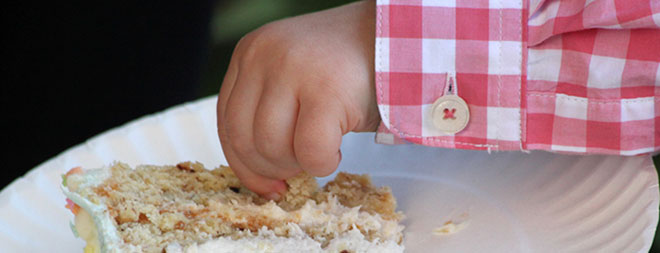Babies Don't Develop Handedness All At Once

(ISNS) -- Reaching for Froot Loops and grabbing Lego pieces to build a tower are different challenges for toddlers. Depending on what they're trying to do, tots tend to develop handedness for different tasks at different ages, according to new research.
Most people are right-handed. Babies start using their right hand to reach for cereal nuggets by age 1. However, children take until age 4 to show such a preference when building Lego models. The findings, published in this month's issue of Developmental Psychobiology, imply tendencies to use one hand more than the other emerge depending on the tasks kids confront, rather than their age.
Preference for the right or left hand is, in part, genetic. Prior studies have shown that some of these one-sided tendencies emerge early. Fetuses suck their right thumb more often than their left; newborns on their back turn to the right more frequently. Most children grow up to be right-handed—in part because of these innate, early leanings, scientists believe.
But the timing of when one hand emerges as the dominant one for most tasks remained unclear.
"As a parent and a scientist, I was surprised to find researchers thought 3-year-olds don't display a hand preference," said neurobiologist Claudia Gonzalez of the University of Lethbridge in Alberta, Canada.
To study how handedness emerged between ages 1 to 5, Gonzalez and her colleagues assigned about 50 tiny participants to a familiar task: grabbing a colorful object or a tasty tidbit. Children ages 1 to 2 picked up Froot Loops or Cheerios to munch at snack time. Four- and 5-year-olds grasped Lego blocks to build a small model. Three-year-old subjects tackled both tasks.
Even the youngest children had strong right-handed leanings when reaching for food, the team found. Three-year-olds were right-handed eaters, but they were just as likely to use their left hand when playing with blocks. The 4- and 5-year-olds used their left hand to hold the base of their model steady, but they manipulated blocks into the correct positions with their other hand—a clear preference for right-handedness.
Get the world’s most fascinating discoveries delivered straight to your inbox.
"There is a developmental milestone between the ages of 3 and 4 when something clicks," Gonzalez said. "Maybe they become more skilled, or they understand the task better."
Until that developmental "click," this study shows hand preference isn't constant across tasks – regardless of a child's age.
The study "uses a very clever design to get at the question of how handedness varies across tasks," said Klaus Libertus, an infant development researcher at the University of Pittsburgh. "We did not know handedness is connected to tasks in this way. I would have expected the 3-year-olds to show the same pattern on both tasks, especially since the demands were so similar."
Developing a hand preference might also correlate with other functions that rely strongly on just one side of the brain, such as language and certain decision-making skills, Gonzalez noted. Preliminary data from children in her lab suggests that when handedness is evident earlier, these other functions also mature more quickly.
Finding the right task to study handedness at different ages will give researchers a firmer grasp on how young brains develop right - or left -handed tendencies, she said.
"You could say hand preference develops before 1, or you could say it doesn't emerge until age 4—just depending on what task you are looking at," said Gonzalez.
Inside Science News Service is supported by the American Institute of Physics. Jyoti Madhusoodanan is a science writer based in San Jose, Calif. She tweets at @smjyoti.


